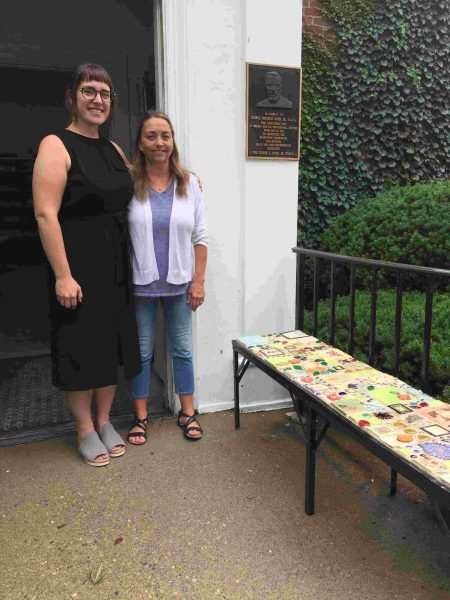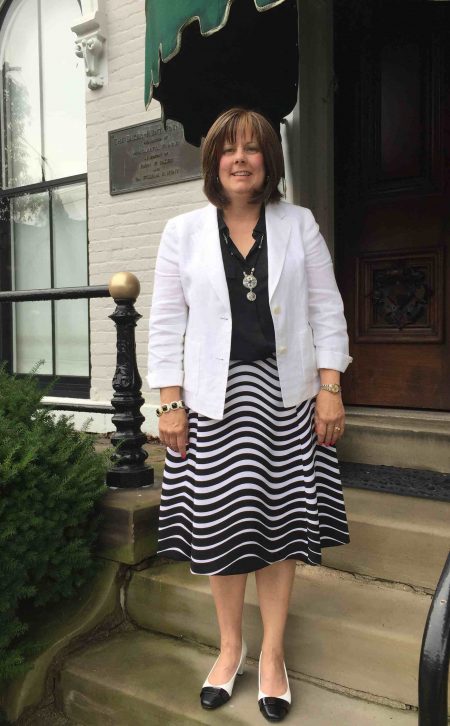Baker Hunt Art & Cultural Center on 620 Greenup St., Covington, offers a wide variety of programs including over 40 art classes, a family museum, and Victorian gardens on a campus of 3.5 acres. A visitor can see two mansions, the Baker Hunt Mansion and Family Museum, and the Kate Scudder House, a 1920s auditorium and studio space set on landscaped grounds in the Licking Riverside Historic District of Covington. Convenient free parking is available in the well-lit, off-street lot on campus. The center is a hidden gem.

Named for Margaretta Baker Hunt, the center encourages the study of art, education and science for all, according to the website. John C. Bayless built the Hunt house in 1845.
The Scudder House has a ballroom where the center offers a concert series, swing classes and staff parties. Renovation of the Scudder House is on deck with the addition of classrooms to expand capacity of up to 50 students.
The current mission is to provide professional art instruction. The center offers classes during the day, weekend and evenings to accommodate families and adults. There are four sessions of art classes given each year. Classes include oil painting, watercolor painting, cartooning, pottery and mosaics. Youth classes are six weeks; adult classes are eight weeks. The center provides scholarships for youth in need.

Instructors are experienced artists and/or teachers. They include Mike Bresnen, digital photography; Jane Bresser, clay; Judy Guttman, oil; Ken Buck: watercolor, pastel; Velma Morris, acrylics; and Ken Swinson, printmaking, among others. The center offers five summer camps with different themes, such as travel. More than 3,500 students from the Tri-State area attend classes annually.
Only several weeks into her job as executive director, Sara W. Schindler brings a wide range of experience from both the profit and nonprofit sectors. A 35-year native of the area, Schindler worked in customer service for the Product Supply sector at Procter & Gamble for 15 years.
She took some time off earlier in her career and returned to work as director of development at St. Xavier High School. Schindler also served as executive director of Boys Hope Girls Hope. She applied for the job of executive director of Baker Hunt and obtained the job. A resident of Union, Kentucky, she realized giving back was important. “How can you not fall in love with this place?” she asked.
One of Schindler’s priorities for Baker Hunt is to provide more outreach to the community. Families are looking for something to do, she said. Most of the visitors are from Northern Kentucky. Schindler said, “People are welcoming here.”

She plans to tie in with schools in the area as well as connect with other organizations on both sides of the river.
The staff at Baker Hunt is small – five employees, including Kelsey Nihiser, art and education director, and Teresa McDannold, business manager. The board consists of five members. Two are from Cincinnati; three are from Northern Kentucky.
The center will undertake a capital campaign of $1.5 million in the fall towards a total of $3 million in the next five years. The money raised will fund updating and maintenance of the buildings, including a new entrance, a culinary kitchen and additional handicapped accessibility.

John Baker rented a store in 1829 on Main St. in Cincinnati from Nicholas Longworth and sold chandeliers, lamps, lamp oil and candles. William H. Hunt, M.D., married John Baker’s daughter Margaretta in 1872. John Baker’s step granddaughter was Kate Scudder (1849 – 1926).
Baker Hunt and Scudder travelled to Portsmouth, New Hampshire in 1909. It was here that the seed was planted that led to the establishment of the Baker-Hunt Foundation, according to an article “If These Walls Could Talk” by Frances Whitson and Margaret Jacobs published in Northern Kentucky Heritage in Fall-Winter 2004. Baker Hunt contacted William S. Rowe, president of First National Bank in Cincinnati, to discuss the idea of a foundation, which began in 1922. She left her house and money in a perpetual trust to promote community art education.
Scudder sold her house and property to the Covington Art Club in 1926. Later, they became part of Baker Hunt Center.
The Baker Hunt house became a museum in 2000. It is filled with paintings, stained glass windows, and a display of gowns from the late 19th century to the early 20th century. One sees a variety of pictures such as The Moor, which some believe is attributed to Frank Duveneck, a Covington native, and a landscape of Payne Hollow, Northern Kentucky by local artist Harlan Hubbard. A crazy quilt organized by Jane Hunt from 1885 – 1888 hangs on the walls framed.
Baker Hunt is a 501©(3) non-profit organization. Visit www.bakerhunt.org or call (859) 431-0020 for more information.
–Laura A. Hobson